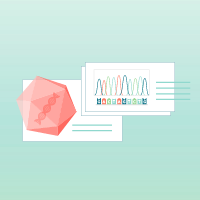Salt-tolerant endonucleases, the benefits for viral vector manufacturing and a comparison of two marketed enzymes
Cell & Gene Therapy Insights 2025; 11(3), 305–317
DOI: 10.18609/cgti.2025.035
In the manufacturing of viral vectors for cell and gene therapies, as well as vaccines, the removal of residual plasmid and host cell-derived DNA and RNA is critical to meet regulatory requirements, ensure product safety, and streamline vector purification. Endonucleases enzymatically cleaving polynucleotide chains to fragments of approximately 3–5 base pairs are commonly used for this purpose. Recombinantly produced Serratia marcescens endonucleases, such as DENARASE®, are the industry standard for DNA removal in viral vector manufacturing processes. These endonucleases are typically used to reduce the plasmid and host cell DNA during viral vector harvest.
It has been shown that higher salt concentrations can significantly improve viral vector solubility and reduce aggregate formation [1]. Additionally, increased salt levels may enhance DNA accessibility for degradation, leading to higher purity and safety of the final product. However, the activity of S. marcescens endonucleases is inhibited at elevated salt concentrations.
This article introduces an engineered version of the wild-type S. marcescens endonuclease, which exhibits improved tolerance to salt, thereby offering greater flexibility in bioprocessing.
